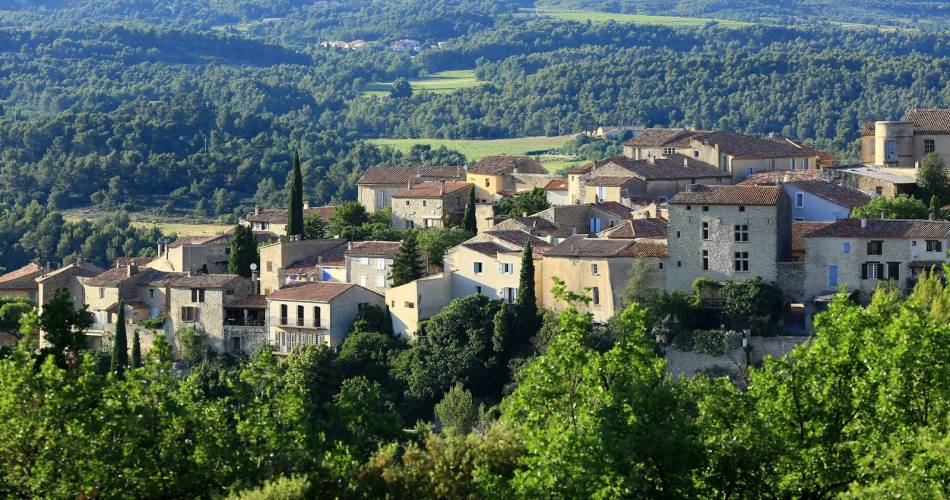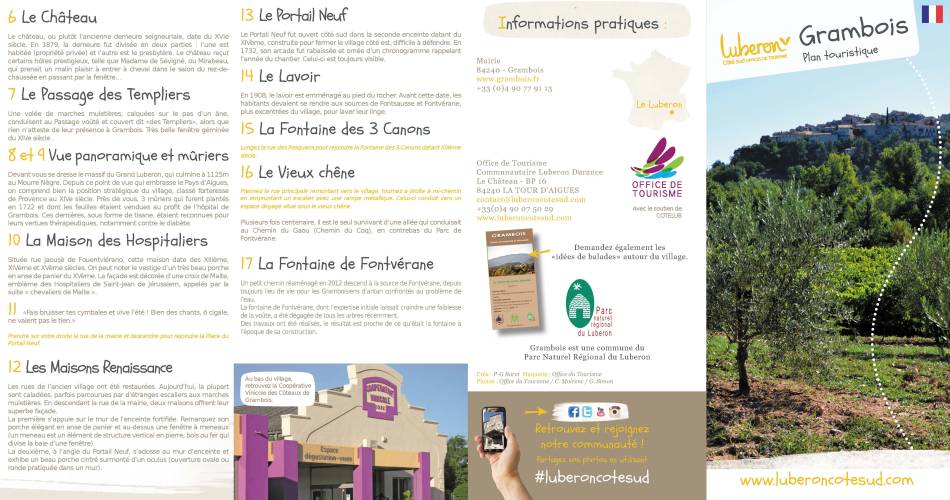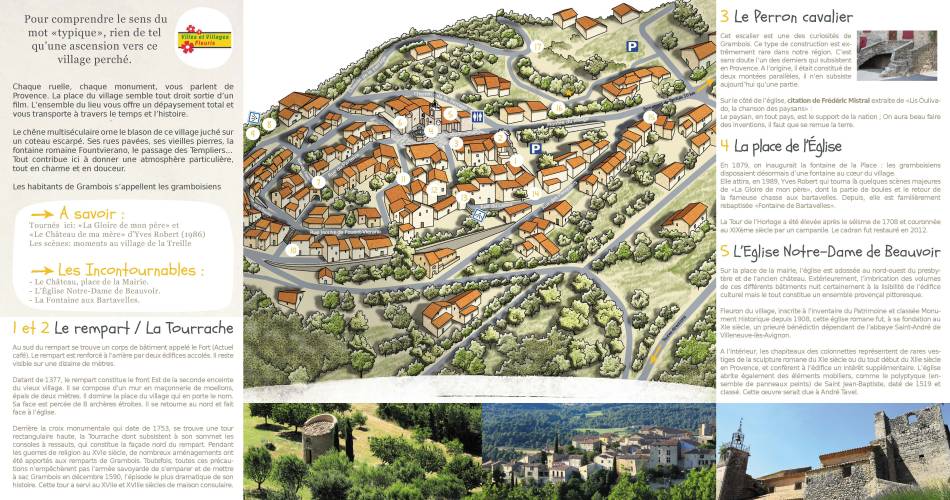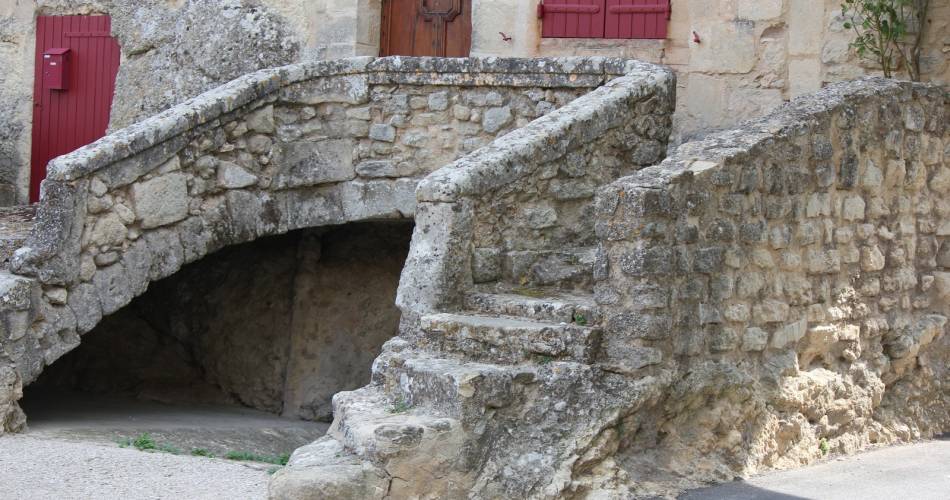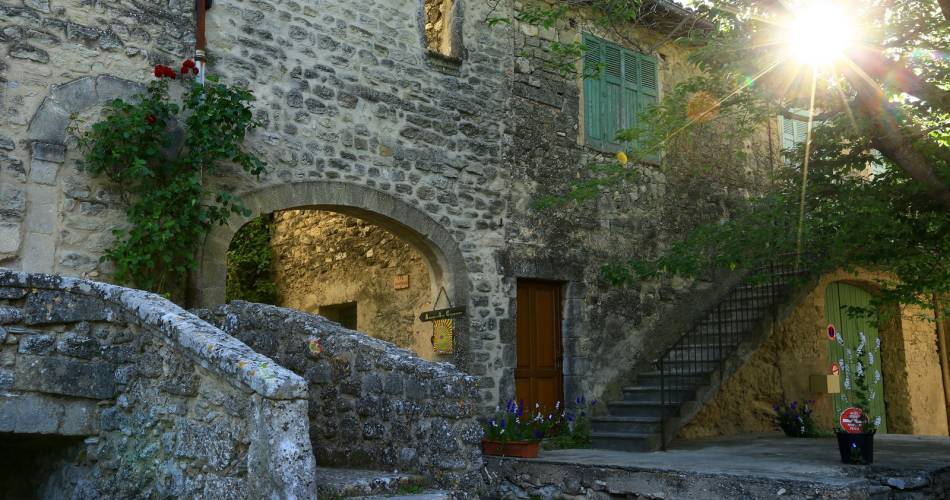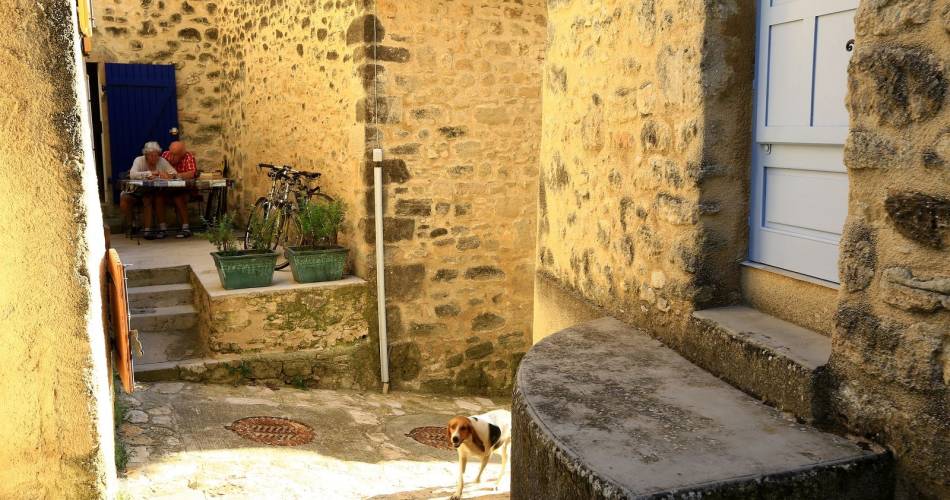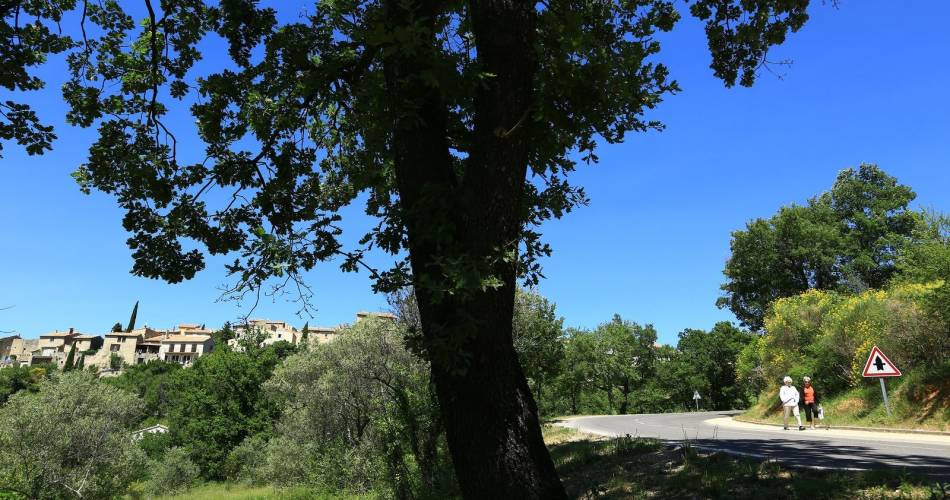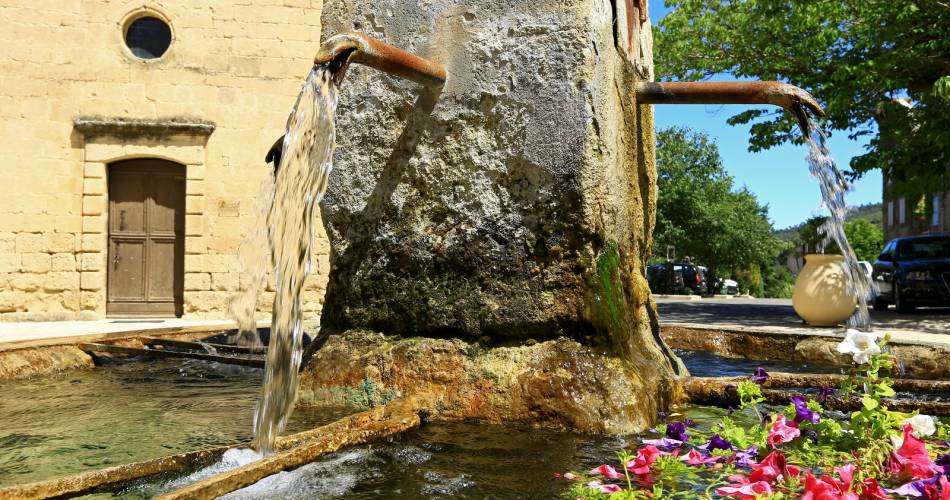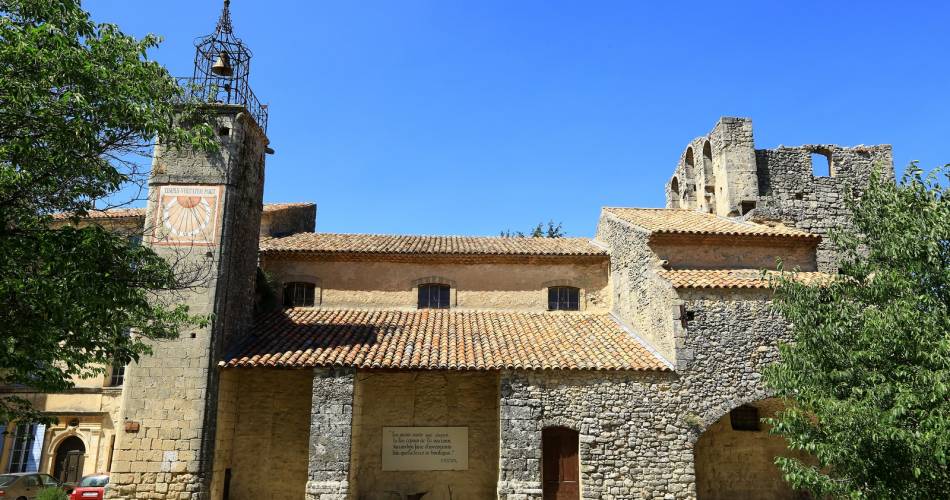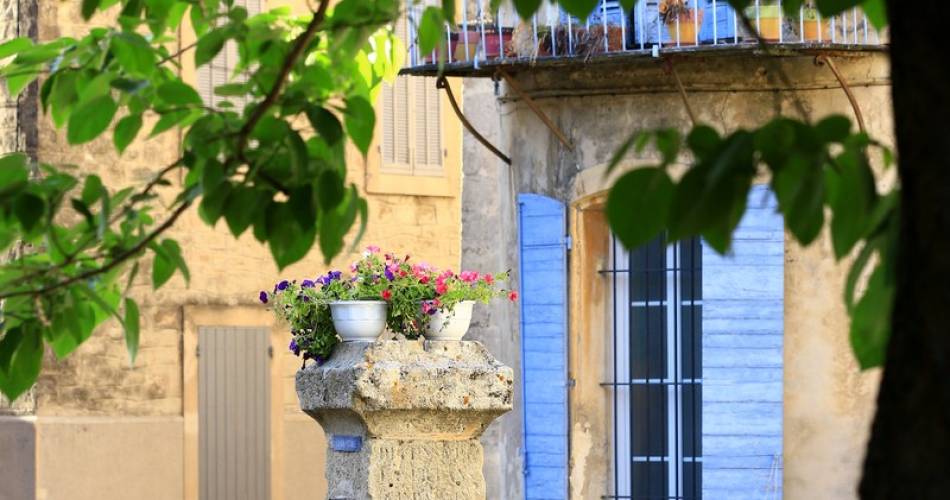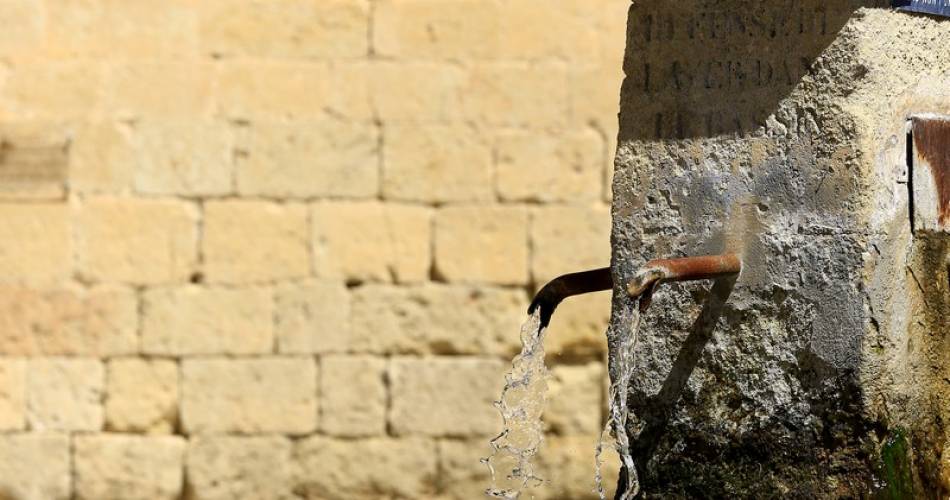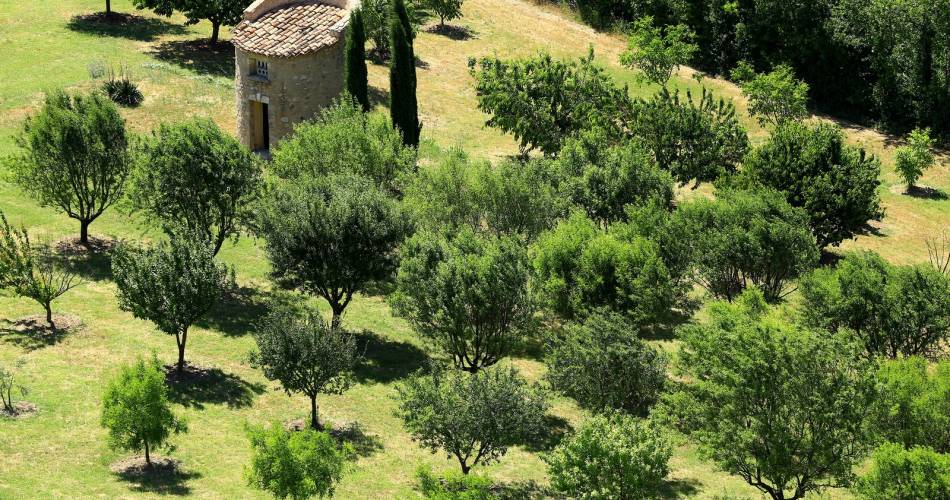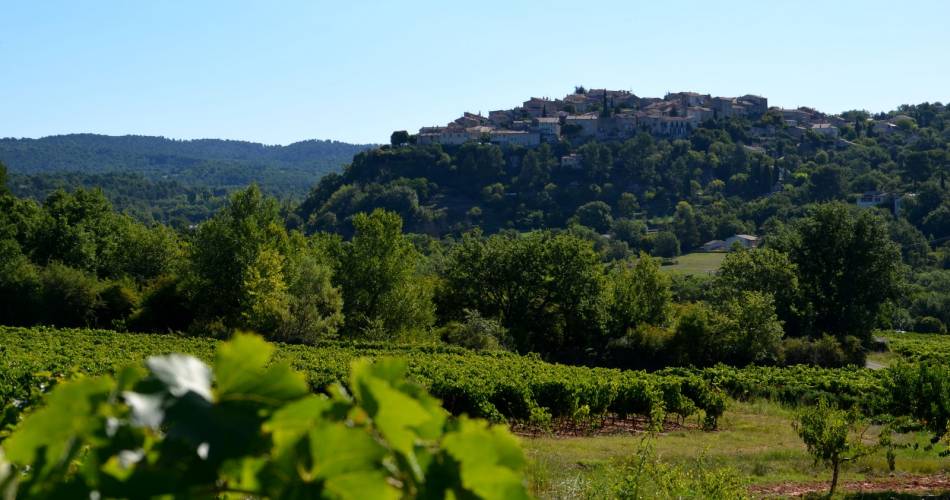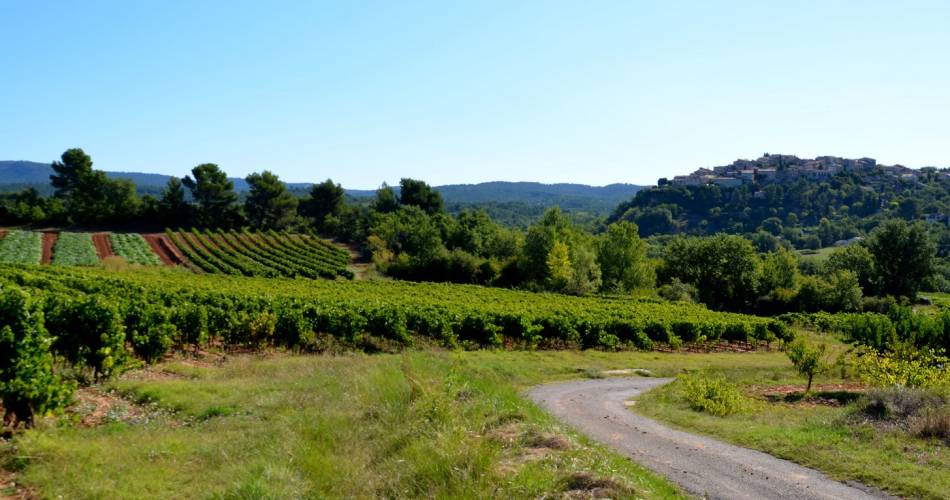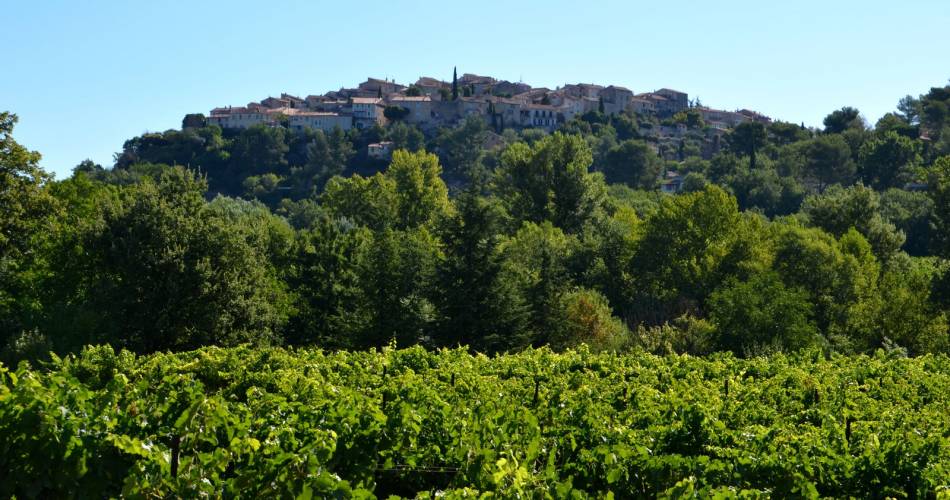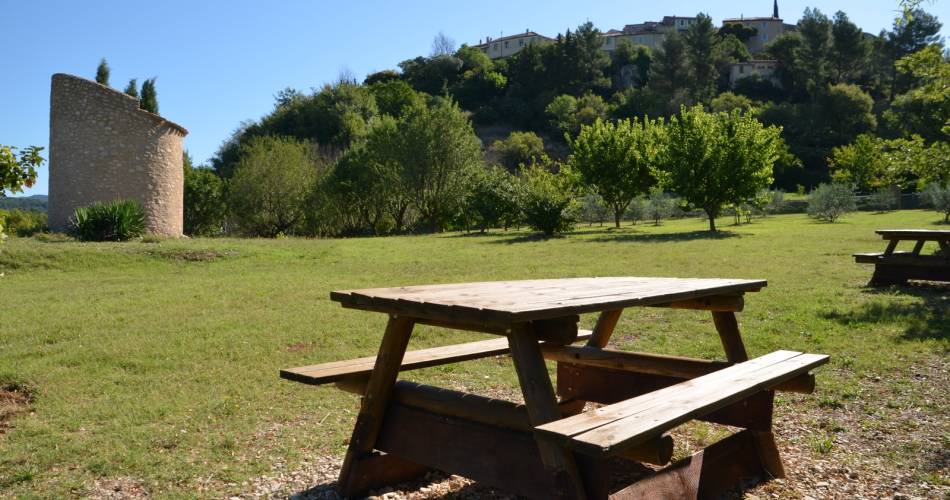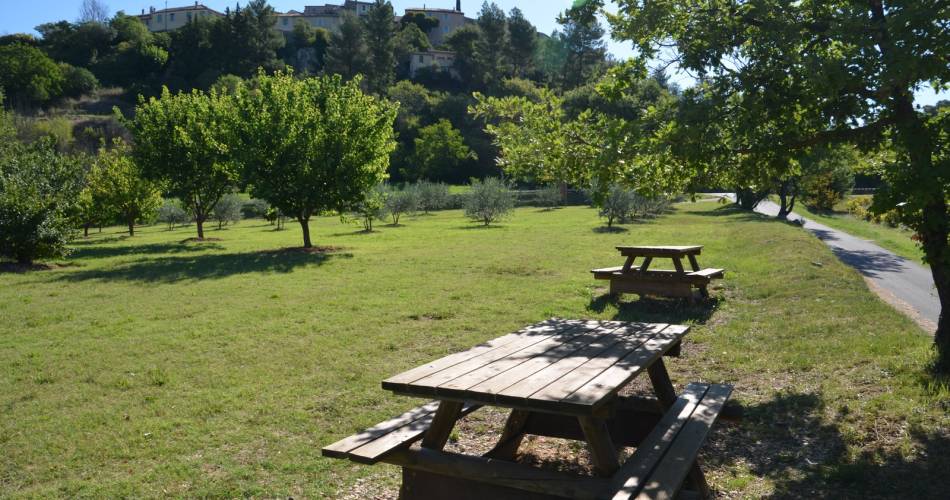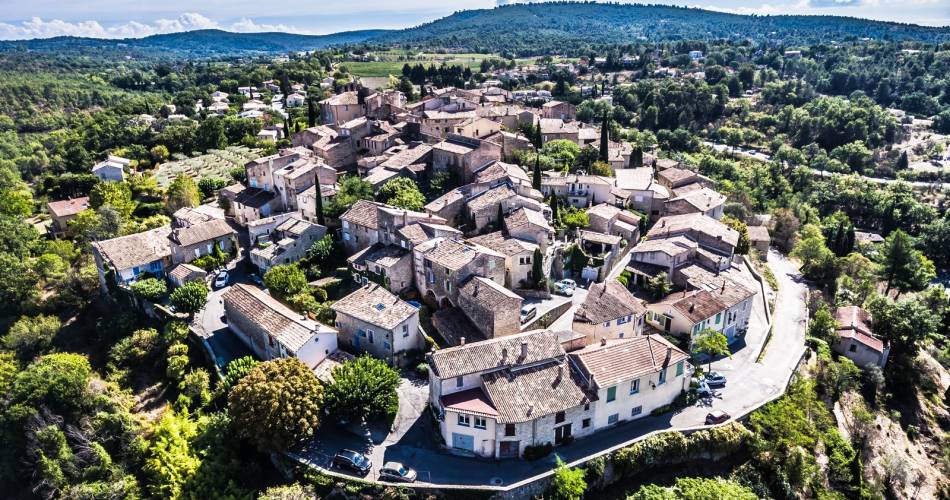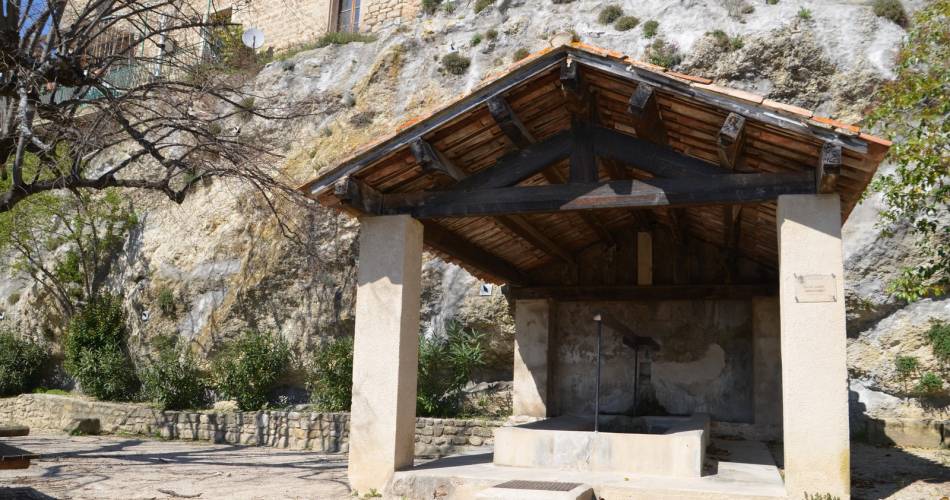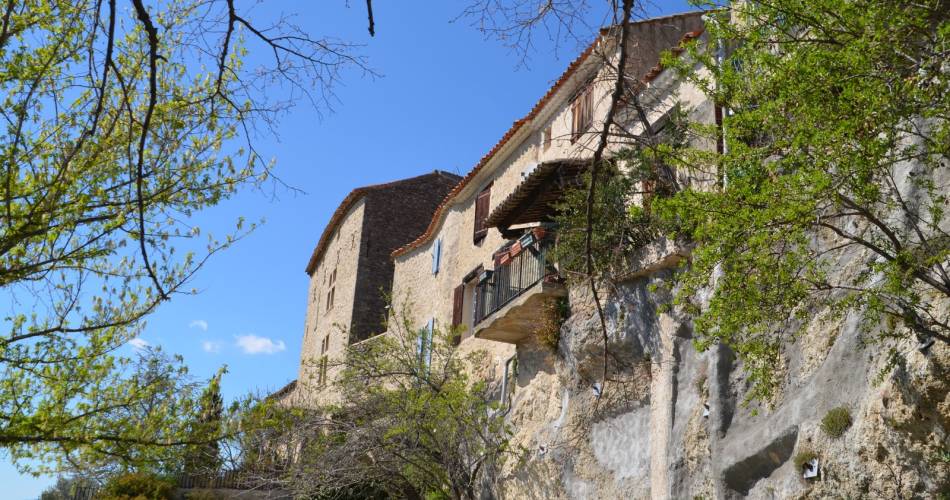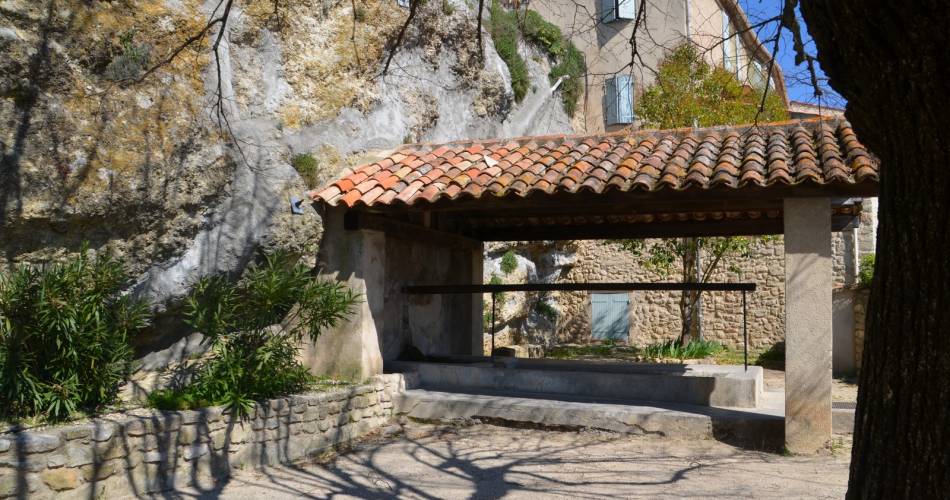Grambois
Grambois
Tourist service in Grambois :
To understand the meaning of the "typical" word, nothing like a climb to the hilltop village. Every alley, every monument, you speak of Provence.
On site, grab a city map and make sure you do not miss anything!
The village square is straight out of a movie. The whole place offers a change of scenery and transports you through time and history.
The centuries-old oak adorns the coat of arms of this village perched on a steep hillside. Everything here contributes to a special atmosphere, while charming and smooth.
ESSENTIALS:
The church Notre Dame de Beauvoir
The battlements
The chapel Saint Pancrace
The fountains and the Oratories
1. The battlements of the village
You can see them from the square « place des remparts ». The battlements date back to the XIIIth century.
2. The « Tourrache » in the north, big rectangle shaped tower, recently restored.
The Fort in the south (current café Dol)
The battlements of Grambois have been improved during the religion wars of the XVIth century. However, it wasn’t enough to prevent the army of Savoie taking hold of the village in december 1590, most dramatic episode of Grambois’ history.
3. The « Perron cavalier »
This staircase is one of the most special feature of Grambois. This kind of building is extremely rare in our region. It is certainly one of the last presently existing in Provence.
4. The church Notre-Dame de Beauvoir
This roman church was built during the century XI. The master piece of its decoration remains the « polyptique of Saint Jean Baptiste » (1519). This work piece is a scarce and anonymous religious painting of Provence wich dates back to the XVIth century. It is ranked as a historic monument since december 1908.
5. The castle…
This former manorial home dates back to the end of the century XVI. Jean de Gautier, lord of Grambois, built his castle and made it particular thanks to a big circular tower while, at the rear of the building, he laid out gardens. Around the year 1730, Michel-Jules de Roquesante, lord of Grambois, restored the front as we can see it nowadays. The castle was owned by the Roquesante family until 1879. After that teh castle was divided in two parts, the first one private and the other one became a presbytery.
Some prestigious guests stayed at the castle like madame de Sévigné, friend of the lord Pierre de Roquesante, or Mirabeau.
… and the fountain of the square
During the year 1879, Joseph Eyguisier, mayor of Grambois, unveiled the fountain of the square. The people of Grambois had now a foutain in the heart of the village.This fountain attracted, in 1989, Yves Robert (french film director) who filmed some major scenes of the movie « La Gloire de mon Père ».
Take the street « rue du Parterre » and you will reach…
6. The « Passage des Templiers »
This alley belongs to a house of the century XIV-XV. No one really knows why its called this way, maybe the reason is that there used to be the order of the « hospitaliers » in Grambois.
Turn to the right to see the door of « Fontvérane », former strenghtened door 7 and go to the panoramic view.
8. Panoramic view
In front of you raises the massif of the Great Luberon which peaks in 1125m at the « Mourre Nègre ». From this point of view its easy to understand why the village was classified « fortress of Provence » in the XIVth century. Close to you are 3 mulberry trees which were planted in may 1722 and whose leaves were sold for the benefit of Grambois’s hospital.
9. The house of the « Hospitaliers »
Situated in «Jaousè de Fouentviérano » street, this house dates back to the XIIIth, XIVth and Xvth centuries. It’s remarquable for many reasons like its very beautiful hall, its front wall decorated with a Malta cross (symbol of the « hospitaliers de Saint-Jean de Jérusalem »).
10. Pierre Graille’s workshop
A few meters away from the house ot the hospitaliers, in your right, the house of Pierre Graille, famous crib figurine maker but also sculptor, artist and craftsman accomplished. He is also known to have realized one of the most beautiful crib of Provence. About one hundred crib figurines are exposed each year in the church « Notre Dame de Beauvoir » at Christmas time.
11. Renaissance streets and houses
The steets of the old village have been restored. When you go down the city hall street you can see two houses offering you two beautiful front walls.
12. The « Portail neuf » and the battlements’ door
The « Portail Neuf » is one of the former door of the strenghtened surring walls. It’s called « Portail neuf » (New Gate) because it was buillt in1377 when new battlements are added to protect the church. The main gate was condamned for more safety and the « Portail Neuf » took its place, in front of the battlements door.
Here you are arrived at the term of this discovery of Grambois, by hoping that you appreciated it…
IDEAS WALKING:
- The path of the 4 fountains.
- The Way of Gaou.
- The road to Valbonette
The village square is straight out of a movie. The whole place offers a change of scenery and transports you through time and history.
The centuries-old oak adorns the coat of arms of this village perched on a steep hillside. Everything here contributes to a special atmosphere, while charming and smooth.
ESSENTIALS:
The church Notre Dame de Beauvoir
The battlements
The chapel Saint Pancrace
The fountains and the Oratories
1. The battlements of the village
You can see them from the square « place des remparts ». The battlements date back to the XIIIth century.
2. The « Tourrache » in the north, big rectangle shaped tower, recently restored.
The Fort in the south (current café Dol)
The battlements of Grambois have been improved during the religion wars of the XVIth century. However, it wasn’t enough to prevent the army of Savoie taking hold of the village in december 1590, most dramatic episode of Grambois’ history.
3. The « Perron cavalier »
This staircase is one of the most special feature of Grambois. This kind of building is extremely rare in our region. It is certainly one of the last presently existing in Provence.
4. The church Notre-Dame de Beauvoir
This roman church was built during the century XI. The master piece of its decoration remains the « polyptique of Saint Jean Baptiste » (1519). This work piece is a scarce and anonymous religious painting of Provence wich dates back to the XVIth century. It is ranked as a historic monument since december 1908.
5. The castle…
This former manorial home dates back to the end of the century XVI. Jean de Gautier, lord of Grambois, built his castle and made it particular thanks to a big circular tower while, at the rear of the building, he laid out gardens. Around the year 1730, Michel-Jules de Roquesante, lord of Grambois, restored the front as we can see it nowadays. The castle was owned by the Roquesante family until 1879. After that teh castle was divided in two parts, the first one private and the other one became a presbytery.
Some prestigious guests stayed at the castle like madame de Sévigné, friend of the lord Pierre de Roquesante, or Mirabeau.
… and the fountain of the square
During the year 1879, Joseph Eyguisier, mayor of Grambois, unveiled the fountain of the square. The people of Grambois had now a foutain in the heart of the village.This fountain attracted, in 1989, Yves Robert (french film director) who filmed some major scenes of the movie « La Gloire de mon Père ».
Take the street « rue du Parterre » and you will reach…
6. The « Passage des Templiers »
This alley belongs to a house of the century XIV-XV. No one really knows why its called this way, maybe the reason is that there used to be the order of the « hospitaliers » in Grambois.
Turn to the right to see the door of « Fontvérane », former strenghtened door 7 and go to the panoramic view.
8. Panoramic view
In front of you raises the massif of the Great Luberon which peaks in 1125m at the « Mourre Nègre ». From this point of view its easy to understand why the village was classified « fortress of Provence » in the XIVth century. Close to you are 3 mulberry trees which were planted in may 1722 and whose leaves were sold for the benefit of Grambois’s hospital.
9. The house of the « Hospitaliers »
Situated in «Jaousè de Fouentviérano » street, this house dates back to the XIIIth, XIVth and Xvth centuries. It’s remarquable for many reasons like its very beautiful hall, its front wall decorated with a Malta cross (symbol of the « hospitaliers de Saint-Jean de Jérusalem »).
10. Pierre Graille’s workshop
A few meters away from the house ot the hospitaliers, in your right, the house of Pierre Graille, famous crib figurine maker but also sculptor, artist and craftsman accomplished. He is also known to have realized one of the most beautiful crib of Provence. About one hundred crib figurines are exposed each year in the church « Notre Dame de Beauvoir » at Christmas time.
11. Renaissance streets and houses
The steets of the old village have been restored. When you go down the city hall street you can see two houses offering you two beautiful front walls.
12. The « Portail neuf » and the battlements’ door
The « Portail Neuf » is one of the former door of the strenghtened surring walls. It’s called « Portail neuf » (New Gate) because it was buillt in1377 when new battlements are added to protect the church. The main gate was condamned for more safety and the « Portail Neuf » took its place, in front of the battlements door.
Here you are arrived at the term of this discovery of Grambois, by hoping that you appreciated it…
IDEAS WALKING:
- The path of the 4 fountains.
- The Way of Gaou.
- The road to Valbonette
Equipment
- Picnic area
- Bar
- Public WC
- Car park
- Restaurant
- Entertainments room
- Meeting room
- Parking nearby
- Coach parking
Services
- Pets welcome
- Coach access
- Shop
- Tourist brochures
- Tourist information
- Guided tours
- Spot photo
Dates and times
All year round, daily.
Languages spoken
- German
- English
- French
Prices
Free access.
Contact
Grambois84240 Grambois
Tel :
View number
04 90 77 91 13
E-Mail : Afficher le mail mairie.grambois@wanadoo.fr
Website : http://www.grambois.fr/
E-Mail : Afficher le mail mairie.grambois@wanadoo.fr
Website : http://www.grambois.fr/
Coordinates
Longitude : 5.588916Latitude : 43.762636
> Getting there by public transport
Downloads
This page was produced with the help of theSud Luberon Tourisme
